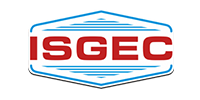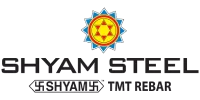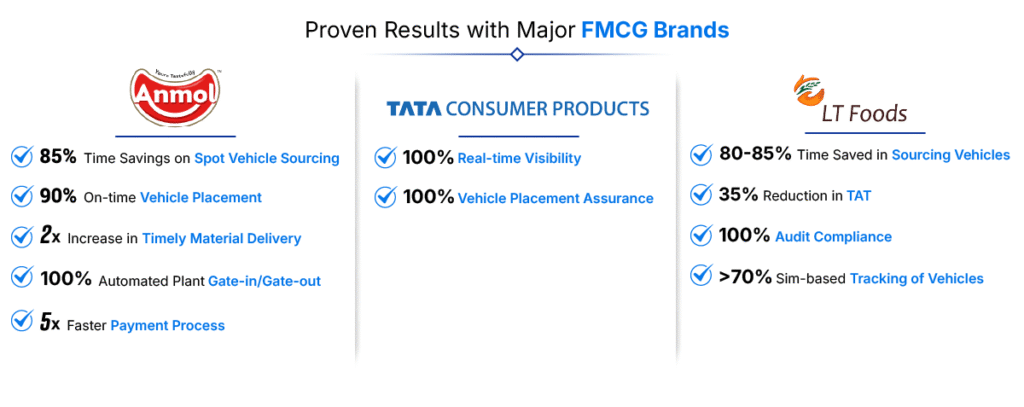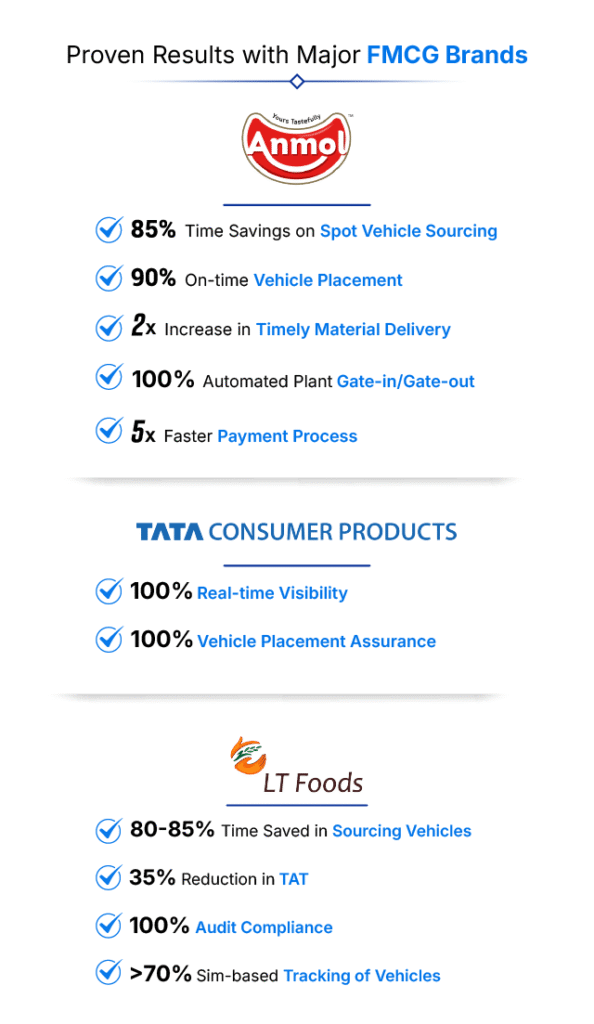
How a Heavy Machinery Giant Achieved 15% Freight Cost Savings and Lightning-Fast Vehicle Finalisation with SuperProcure
Case Study How a Heavy Machinery Giant Achieved 15% Freight Cost Savings and Lightning-Fast Vehicle










Case Study How a Heavy Machinery Giant Achieved 15% Freight Cost Savings and Lightning-Fast Vehicle

Table of Content : For decades, the boardroom conversation about logistics was brief, and usually painful: “It costs
If you’re leading logistics in the FMCG space, you know the reality, getting deliveries right, every time, is far more complex than it looks on a dashboard. Despite detailed planning, things still go off course.
This is the everyday pressure facing supply chain teams, and it’s why more FMCG leaders are moving towards Transportation Management Systems (TMS). Not just to monitor shipments, but to prevent problems before they happen. It’s about gaining control, aligning teams, and creating a system where deliveries happen predictably, not just hopefully.
For this edition of Expert Insights, we’ve teamed up with Neha Garodia, Associate Director – Mid Market at Super procure with 7+ experience in the industry to unpack what’s really causing OTIF misses on the ground and how leading FMCG brands are solving them with the right TMS strategies.
Picture this…
It’s the final Friday of the month. Sales teams are chasing numbers, dispatch is working overtime, production is on point, and your factory floor is running like a well-oiled machine.
Inventory is packed. Trucks are lined up. The plan is in motion.
And then, just when it feels like you’re about to cross the finish line…
The truck doesn’t arrive.
Or it arrives late.
Or worse, part of the delivery goes missing.
Unfortunately, for most FMCG supply chain professionals in India, this isn’t a rare event—it’s a recurring nightmare.
Missed OTIF (On Time, In Full) metrics mean more than just a service lapse. They lead to:
The question is: why do these issues persist, even when planning and resources are in place?
In this blog, we’ll break down:
✅ Why OTIF failures happen even in well-resourced supply chains
✅ How leading FMCG companies are using TMS capabilities to fix the root causes
When you look beyond the dashboards and KPIs, here’s what seasoned logistics managers and supply chain heads in the FMCG industry say are the real reasons behind OTIF misses:
Despite strong transporter relationships, last-minute no-shows or delayed vehicle placements continue to disrupt dispatches, especially during month-end closures or demand spikes.
Expert Take: The problem isn’t just sourcing a vehicle, it’s sourcing the right vehicle at the right time to match production flow and dispatch schedules.
How Industry Leaders Solve It: Companies using SuperProcure’s TMS streamline vehicle sourcing with automated tender management, real-time rate comparisons across transporters, and intelligent workflows that support both contract and spot operations helping teams stay ahead of demand and avoid last-minute disruptions.
Many teams track vehicle departures, but lose visibility once the truck hits the road. By the time a delay becomes apparent, the damage is done, delivery slots are missed, and customer SLAs take a hit.
Expert Take: Knowing when a truck left your gate isn’t enough. You need predictive visibility to foresee disruptions and act before the customer feels the impact.
How Industry Leaders Solve It: Leading supply chain teams are adopting a multi-modal tracking approach, combining FASTag toll data, SIM-based tracking and GPS tracking. Automated delay alerts and escalation workflows enable timely interventions to protect SLAs and customer commitments.
OTIF is more than a logistics metric. It’s the result of how well cross-functional teams sync their actions right from production planning to invoicing.
Expert Take: Many FMCG companies still rely on WhatsApp groups, phone calls, and manual spreadsheets to keep everyone informed. That’s not sustainable at scale.
How Industry Leaders Solve It: Strategic Solution through SuperProcure’s unified control tower provides single-dashboard visibility for all stakeholders, automated workflows for escalation, and role-based access that eliminates information gaps between teams.
Delays at loading docks, confusion around gate pass issuance, or missing PODs (Proof of Delivery) can slow down the entire fulfillment cycle.
Expert Take: It’s not uncommon for a shipment to get delayed simply because a document wasn’t ready or wasn’t uploaded at the right checkpoint. Manual document handling creates bottlenecks that cascade through the entire delivery timeline, often causing delays that could have been prevented with proper digitization.
How Industry Leaders Solve It: By integrating systems with their existing ERPs, leading teams ensure seamless data flow from weighbridge to gate-out. Real-time compliance checks powered by Vahan and Sarathi integrations with government databases enable instant verification of vehicle and driver details, minimizing manual errors and ensuring regulatory compliance before entry.
Even after a shipment reaches its destination, the process isn’t complete until the Proof of Delivery is collected and verified. Manual POD collection leads to delays, misplaced documents, and invoicing hold-ups.
Expert Take: A delay in POD is a delay in cash flow. Without timely and verified PODs, billing cycles stretch, disputes increase, and visibility into delivery performance suffers.
How Industry Leaders Solve It: Companies streamline POD collection through digital uploads by drivers or delivery partners, mobile app-based capture at the point of delivery, and seamless syncing with backend systems. This ensures faster closure of trips, quicker invoicing, and stronger audit trails.
Download the FMCG Logistics Efficiency Checklist now! Download Checklist
Quantifiable Benefits


Companies that delay investment in transportation management capabilities risk falling behind competitors who are already leveraging these technologies for operational excellence.
Top-performing FMCG brands understand this. That’s why they’re investing in TMS platforms that give them control, speed, and real-time decision-making power across their supply chain.
If OTIF is on your radar this year, it’s time to ask:
👉 Is your logistics setup helping you meet delivery commitments or making you fall behind?
👉 Are your teams equipped with the visibility and control they need or stuck reacting to problems too late?
Because in FMCG logistics today, the winners aren’t just the fastest movers. They’re the most predictable, the most reliable, and the most connected.
Subscribe to our blog for the latest news and updates
Ensure your company’s data is completely secure and compliant with the latest regulatory standards






5/5

4.5/5

5/5

4.5/5
Solutions
Industry
Real Time Freight Sourcing And Collaboration Platform
Unit 3B, 4 Bakul Bagan Row, Lansdowne Market. Kolkata- 700025, India
Share us the details to connect to a relevant team member.